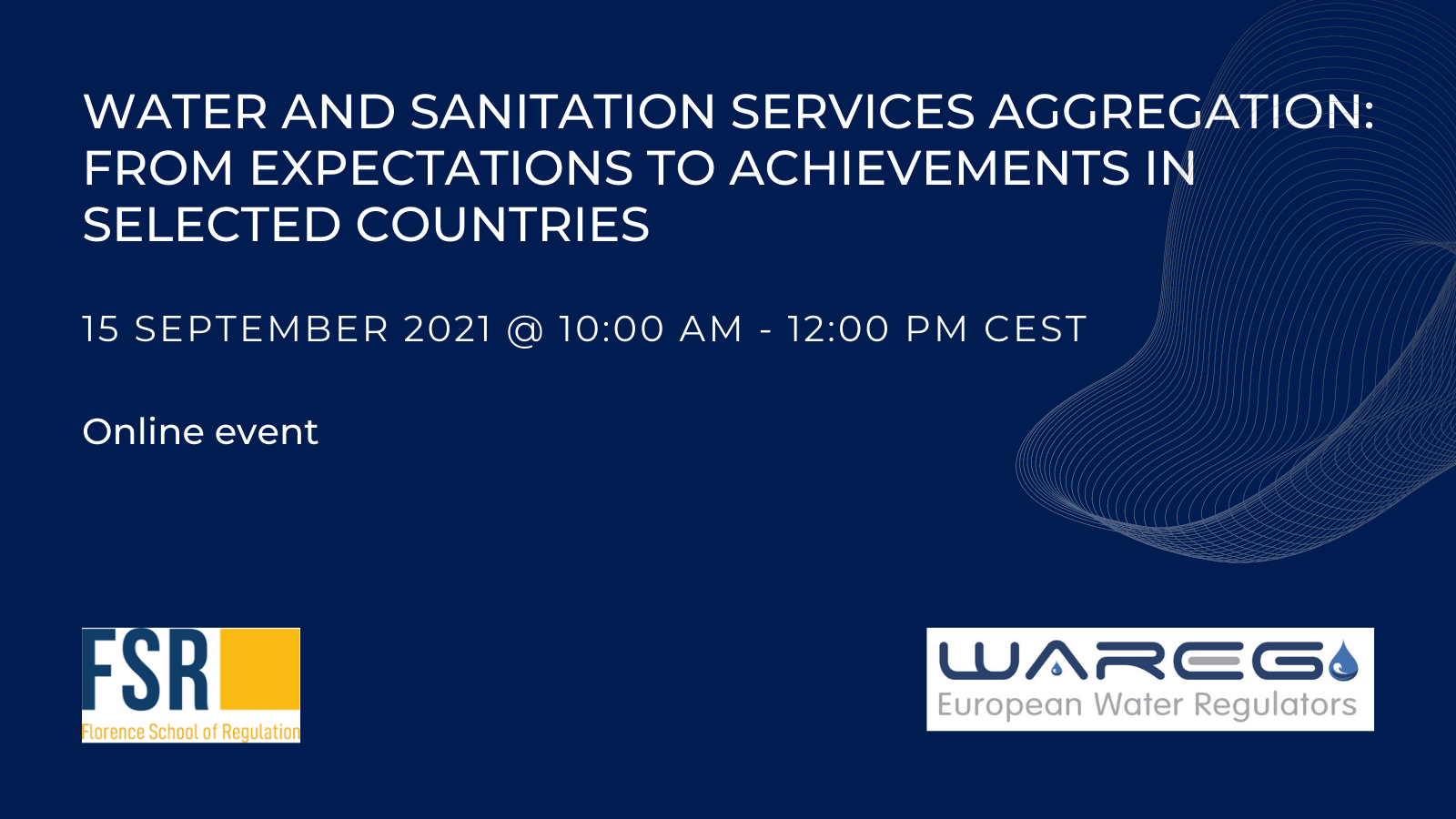
“WATER AND SANITATION SERVICES AGGREGATION: FROM EXPECTATIONS TO ACHIEVEMENTS IN SELECTED COUNTRIES”
WAREG and FSR continue their series of webinars on water utilities aggregation. The third event, “Water and sanitation services aggregation: from expectations to achievements in selected countries”, will take place on the 15th of September as a free webinar open for registration.
Network industries are characterized by increasing yields, and, as such, water and sanitation (WS) utilities that produce larger outputs have on average lower unit costs than utilities that produce smaller outputs. This relationship appears to be present in the WS sector around the globe and is one of the main arguments in favour of utility aggregation, defined as “the process by which two or more service providers consolidate some or all their activities under a shared organizational structure, whether it implies physical infrastructure interconnection or not” (World Bank, 2017). The expectation of cost savings from aggregation is supported by a large number of economic studies since the late 1960s, underlining the potential for economies of scale and scope.
Following these prescriptions, and in an attempt to increase WS services efficiency, many countries in Europe, Africa and Latin America have recently embarked on a reform path to aggregate their WS utilities. Did those aggregation reforms and processes always achieve the expected outcomes? If not, why didn’t the awaited benefits materialize in practice? What are the actual achievements of these reforms? Furthermore, what could be the role of WS regulators in the design, implementation and monitoring of such reforms? These institutions routinely collect key data on utilities that can be of great relevance to inform the design of aggregation in terms of accurate scale and scope, taking into account the local context. Regulatory mechanisms can be used to incentivize aggregation processes implementation. Finally, through the regular monitoring of performance indicators, regulators can also provide information on the recorded outcomes and benefits of aggregation. This regular monitoring is a crucial asset to facilitate accountability toward shareholders and customers as improvement can be steadily demonstrated over time.
Find the draft programme
Deadline for registration is on Monday September 13th, 5pm
Bibliography
World Bank (2017) Toolkit on the Aggregation of Water Supply and Sanitation Utilities
World Bank (2017) Joining Forces for Better Services?: When, Why, and How Water and Sanitation Utilities Can Benefit from Working Together
Klien, Michael (2017) Statistical Analysis: Global Study on the Aggregation of Water Supply and Sanitation Utilities. World Bank, Washington, DC
Aggregation case studies at utility level:
| Country | Utility | Reference |
|---|---|---|
| Brazil | SISAR Ceará Copanor | Dos Santos Rocha, Wilson; Salvetti, Maria (2017), World Bank |
| Colombia | La Línea Regional Scheme Mercado Regional Del Atlántico | Ortiz Moreno, Erica; Salvetti, Maria (2017), World Bank |
| Hungary | Alföldvíz Kiskun-Viz | Kis, Andras Lajos; Salvetti, Maria (2017), World Bank |
| Indonesia | PDAM Intan Banjar PDAM Tirtanadi | Anwar, Alizar; Salvetti, Maria (2017), World Bank |
| Mozambique | Nampula, Nacala, and Pemba Chimoio, Manica, and Gondola | Juízo, Dinis; Salvetti, Maria (2017), World Bank |
| Portugal | Aguas Publicas Do Alentejo Aguas Do Ribatejo | Zenha, José Henrique; Salvetti, Maria (2017), World Bank |
| Romania | Brasov Raja Constanta | Popa, Teodor; Salvetti, Maria (2017), World Bank |